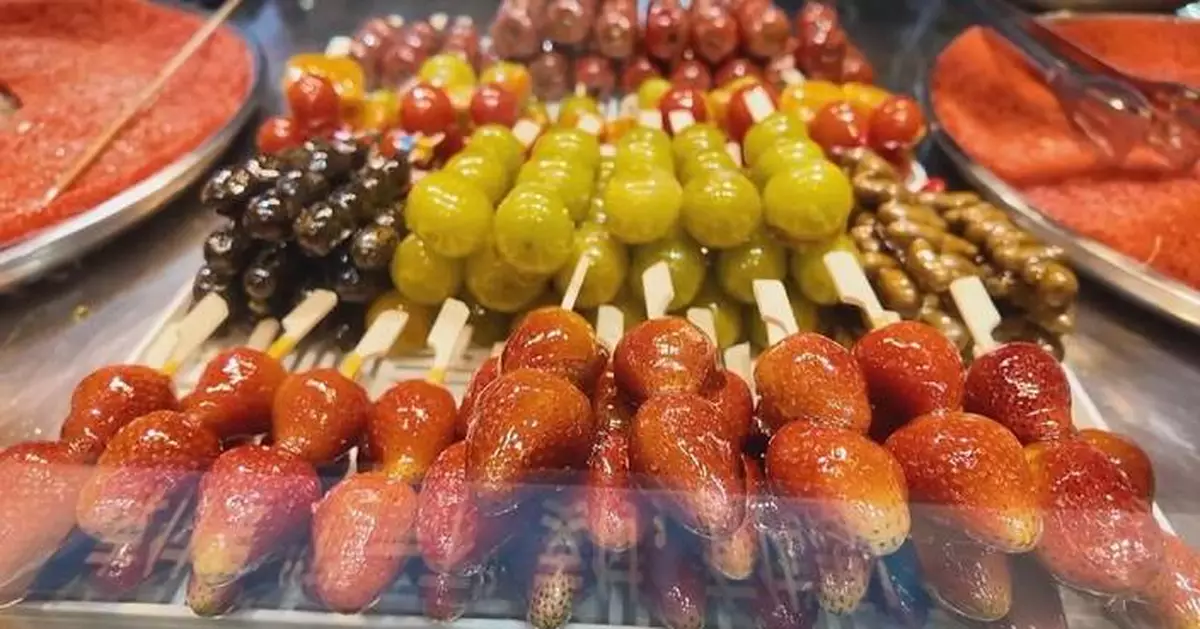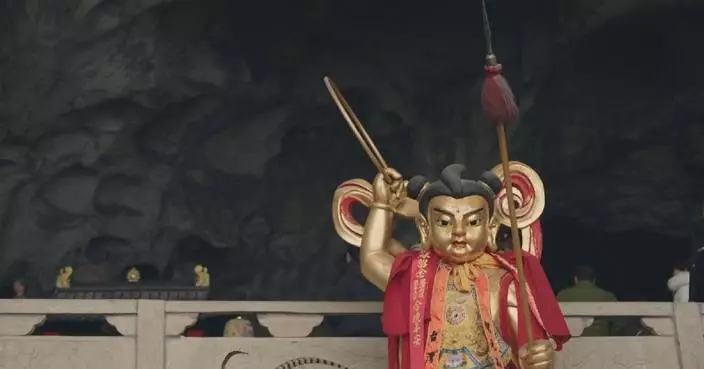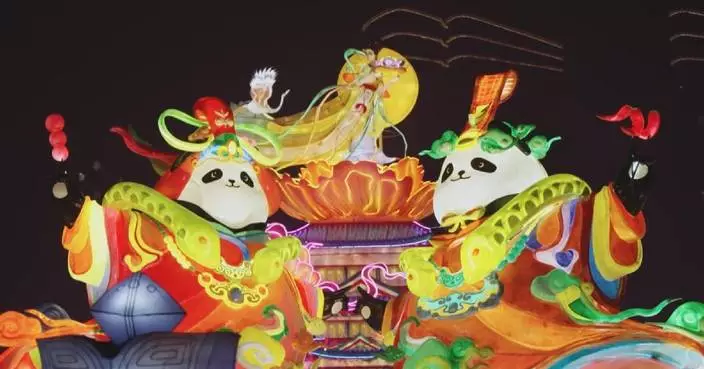Beijing, serving as China's capital for over 700 years, boasts a unique cuisine created through the integration of various ethnic groups and the influence of both imperial and civilian lifestyles.
Dashilan and Qianmen, a historic and cultural center in Beijing, have significantly contributed to the development and preservation of Beijing cuisine. Business there has thrived since the Ming Dynasty (1368-1644), and they became the epicenter of Beijing's culture and entertainment about 100 years ago.
Like many shops on the famous commercial streets of Beijing, a Beijing duck restaurant has a history of over 100 years.
"We use ducks native to Beijing. The cooking process involves 36 procedures, using the handmade tradition. I'm the sixth - generation inheritor, and I'll do my best to keep the taste consistent," said Xiao Baolin, an inheritor of the National Intangible Cultural Heritage Technique of Roasting Duck.
The crispy duck skin is eaten with white sugar, while the breast meat is rolled in a pancake with scallions and sauce.
"There are three Quanjude in Canada -- Ottawa, Toronto and Vancouver. There's one in Bordeaux. There are, I think, three in Japan. They are going international," said Jim Boyce, a foodie from Canada.
Many of Beijing's street delicacies have their roots in imperial court cuisine. Take Luzhu, for example, which originated from a royal dish called "Suzhou-style stewed pork." However, smart Beijingers swapped the expensive pork -- the main ingredient -- for affordable pig offal, creating a nutritious and hearty dish perfect for winter.
"My friend, who has been a chef for 20 years, he is a Beijinger. He says Luzhu is the real Beijing dish. It's a very working-class dish, but also full of nutrients. It's healthy, and it's great in the winter. It will warm you up," said Boyce.
To cater to the consumption habits of young people, century-old stores are blending Beijing's culture and aesthetics into coffee, bridging the past and the present.
In century-old stores on the century-old streets, the food becomes a tangible piece of history of Beijing, which was the mixing point of nomadic and agriculture lifestyles during the ancient time.
"If you look at pictures of Beijing from a hundred years ago, you see camels in Beijing. These were nomadic people coming through, and if you also look at those pictures, you see people selling tanghulu (sugar-coated haws on a stick). You could go on the street and buy tanghulu, so there is this long history of food here," said Boyce.
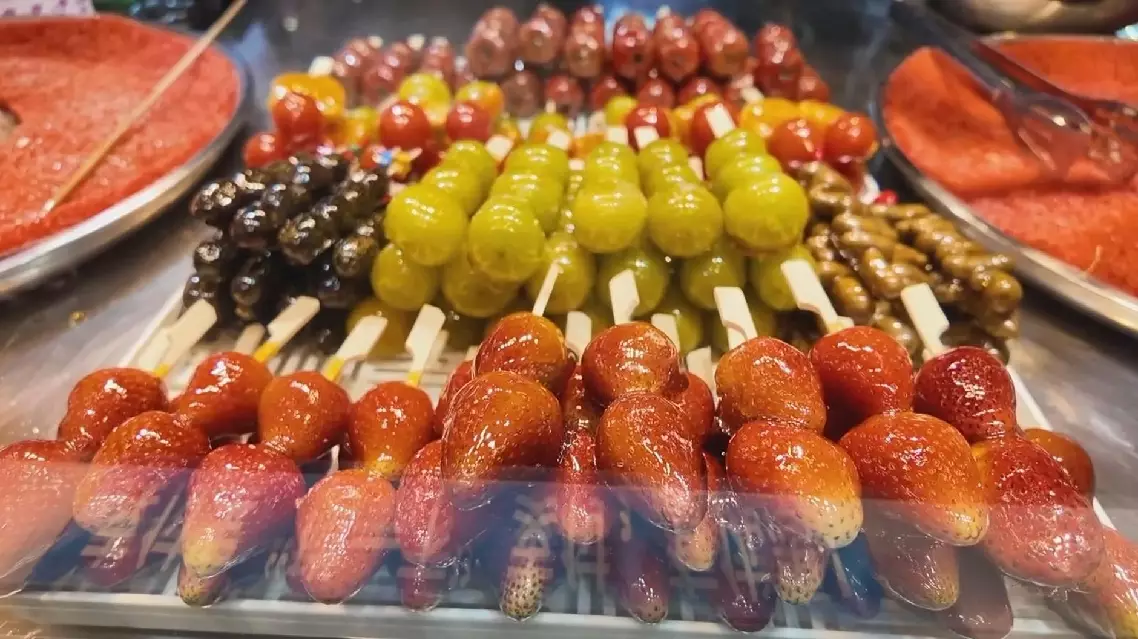
Beijing cuisine mirrors city's rich history
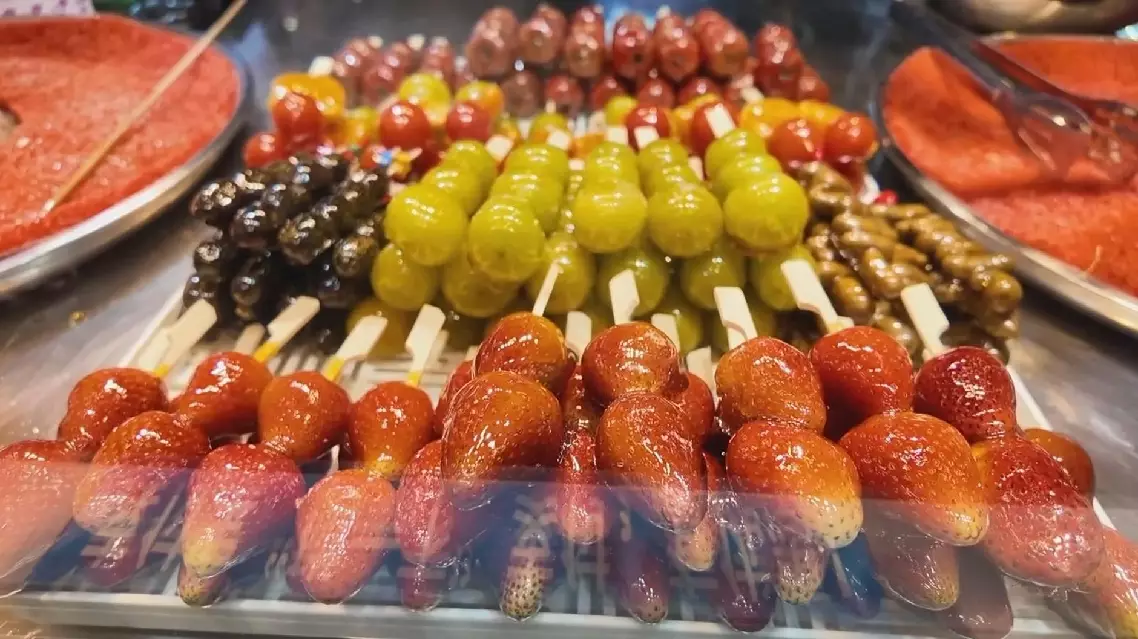
Beijing cuisine mirrors city's rich history


